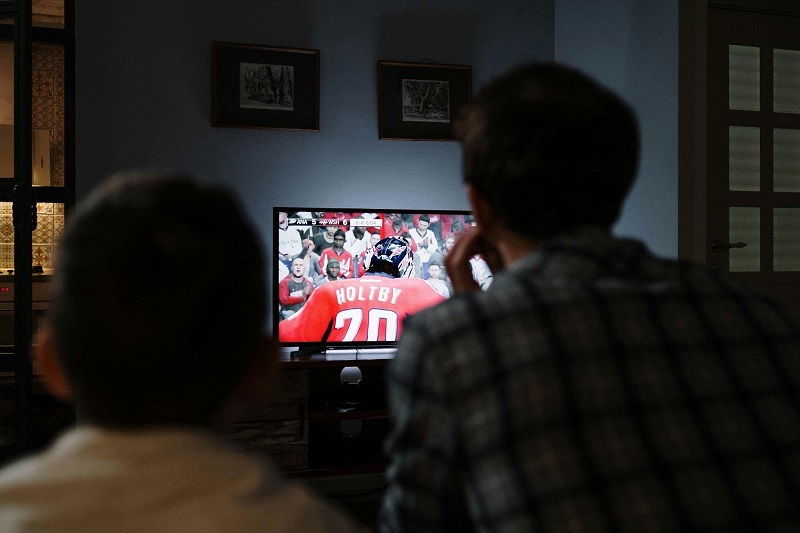In the past, getting sports updates through newspapers, radio, or television could take anywhere from several hours to a full day. Fans often had to wait until the next morning’s paper to read game results or tune in to scheduled radio or TV broadcasts for highlights. In today’s digital age, fans expect real-time updates that provide up-to-the-minute coverage and instant notifications as games unfold. This shift transformed sports updates faster, more interactive, and constantly within reach.
Let’s talk in depth about how real-time sports updates have transformed the way fans experience, engage with, and connect to the world of sports.
Instant Access to Information
Real-time sports updates allow fans to access live scores, statistics, and play-by-play information as events occur. These do not apply only to sports news but also to sports betting. Take FanDuel, for example. FanDuel Sportsbook offers real-time odds, live betting features, and in-game statistics that help users make informed wagers. With mobile apps and sports websites providing continuous updates, fans remain connected to the action even when they cannot watch the event live.
The rapid sharing of updates also supports global accessibility. Fans from different time zones can stay informed about their favorite teams without delay. This has expanded the reach of sports to international audiences and strengthened the global sports community. Real-time updates have turned every game into a continuous flow of information, keeping fans connected wherever they are. This immediacy has become essential to modern sports consumption.
Enhanced Fan Engagement
Real-time updates promote higher levels of fan interaction by providing constant streams of information that invite immediate responses. Fans can follow every moment, comment on plays, and share reactions instantly through online platforms. This active participation fosters emotional investment and makes fans feel part of the unfolding event. Continuous updates maintain excitement by allowing fans to follow every moment as it happens. This constant stream of information keeps audiences engaged throughout the game and sustains their attention beyond traditional viewing methods.
In addition, real-time engagement increases loyalty toward teams and sports organizations. When fans receive accurate, timely information, their connection with the sport deepens. They can follow their favorite players and track important statistics, which adds to their sense of involvement. By maintaining a steady flow of updates, sports organizations build stronger relationships with fans. This ensures ongoing interest and repeat engagement across multiple platforms.
Social Media Interaction
Social media platforms have become central to how fans consume real-time sports updates. Networks such as X, Instagram, and Facebook allow users to discuss and share reactions while events happen. This has created online communities where fans can connect, debate, and celebrate together. The immediacy of social media amplifies excitement. It also turns isolated viewing experiences into collective, interactive moments that connect people worldwide.
Real-time interaction on social media also encourages diverse participation. Fans can follow official team accounts, journalists, or other supporters to gain different perspectives on a game. Hashtags, live chats, and short video clips make it easy to share key moments instantly. This accessibility strengthens community engagement by allowing fans to share reactions and opinions instantly. It also promotes ongoing conversations that keep sports discussions active long after a game has ended.
Second-Screen Culture
The rise of real-time updates has encouraged a second-screen culture in modern sports viewing. Fans often use smartphones, tablets, or laptops alongside television broadcasts to check live statistics and commentary. This multitasking behavior enriches the viewing experience by offering additional context and analysis. It enables fans to access in-depth insights that enhance understanding of the game and make watching more interactive.
Second-screen culture has also improved accessibility for fans who cannot watch full broadcasts. Live text updates, short clips, and instant notifications provide an alternative way to follow events in real time. This flexibility caters to busy lifestyles, ensuring that fans stay connected even when they are not watching live. The integration of multiple screens has transformed sports into an information-rich experience that keeps fans continuously informed.
Personalized and Data-Driven Experiences
Advancements in technology have allowed real-time sports platforms to deliver personalized updates. Fans can customize notifications for specific teams, players, or events, ensuring the information they receive is relevant to their interests. Data analytics make this possible by tracking user preferences and tailoring content accordingly. Personalized updates increase satisfaction and make following sports more efficient and meaningful for each fan.
These data-driven systems also improve fan retention by offering targeted recommendations and highlights. When users receive information that matches their interests, they are more likely to engage regularly. Fantasy sports and betting platforms have further expanded personalization by providing real-time player data and performance metrics. This tailored experience has become a major factor in why real-time updates are central to modern sports fandom.
Staying Connected in the Modern Sports Era
Real-time sports updates have revolutionized how fans experience and engage with sports by providing instant access to scores, statistics, and live commentary. They have enhanced fan participation, built global sports communities through social media, supported second-screen engagement, and offered personalized, data-driven experiences. Yet, these advantages represent only the beginning. Expect future innovations that will make following sports even more interactive and engaging.



